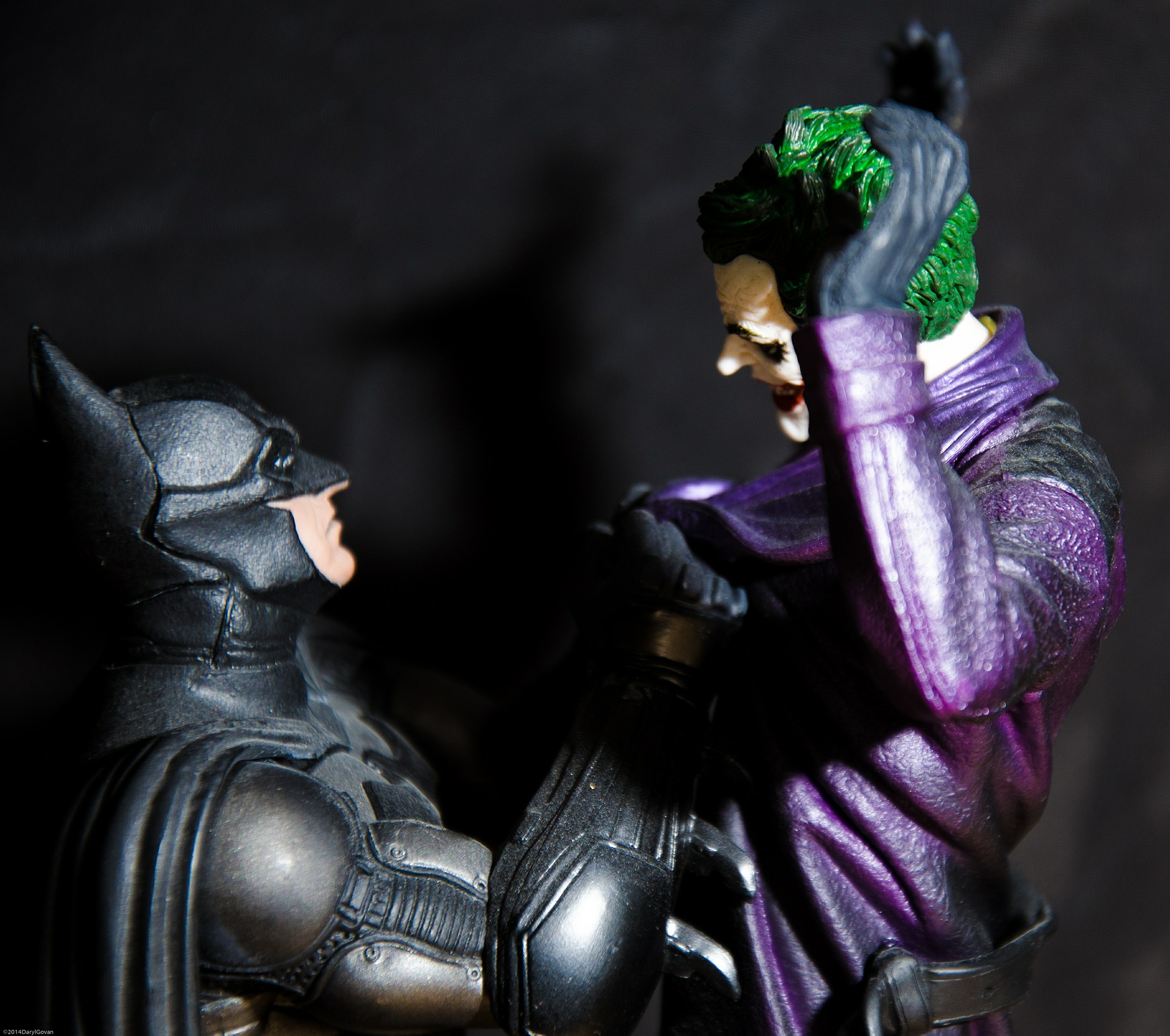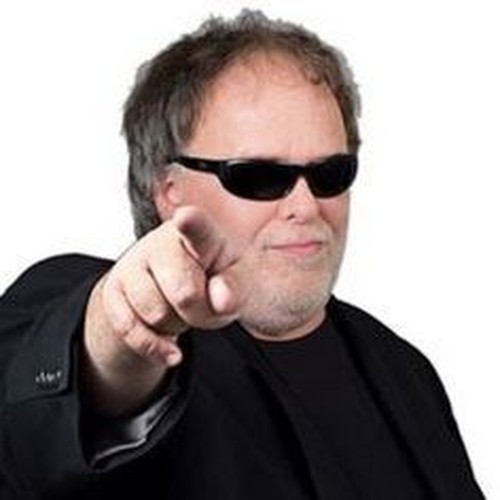
Sometimes as a program director, you get lucky – a show that was destined to be great lands in your lap.
And then there’s the other 99% of the time when you’re tasked with the idea of casting a show, hoping to find chemistry – the broadcasting equivalent of lightning in a bottle.
If you’ve been in the PD chair before, you’ve probably experienced radio shows that have gone wrong. Perhaps both of the show’s namesakes are alpha dogs, each wanting to lead the way – almost always in two different directions. Or the opposite – a bunch of interesting characters without a quarterback. Or a solid leader “without the funny,” as Hubbard programming guru, Greg Strassell, refers to it.
Managing and coaching a show is one skill set. But before that happens, there’s the question of casting. Do you have the right players in place to make great, habit-forming, buzz-worthy radio?
All those thoughts started to pinball in my consultant brain when I read “Every Actor Is Either A Batman Or A Joker” in UPROXX by editor-at-large Brian Grubb.
His post was inspired by the casting of Robert Pattinson (famous for those Twilight movies) as the lead superhero in The Batman, yet another movie about Gotham City’s Caped Crusader.
Of course, casting decisions are never quantifiable. They’re always objective. And one person’s Clark Kent is another’s Lex Luthor.
To make his point, Grubb leaves us with many examples. Classic Batman’s include Will Smith, Bradley Cooper, and Robert Downey, Jr. And on the Joker side of the ledger, it’s Paul Giamatti, Johnny Depp, and James Franco. 
And then there’s the late Chadwick Bozeman, definitely a Batman. Although his millions of fans would consider it more appropriate to memorialize him forever as Black Panther.
To ensure no one got totally offended by his dream casting, Grubb reminded us that women play these roles very well, too. That would make Charlize Theron, Gal Gadot and J-Lo the Batmans (although they’re all Wonder Woman, right?), with Margot Robbie, Tilda Swinton, and Tiffany Haddish all being perfect Jokers.
And so we turn our attention to morning shows and other ensemble teams that are successful on the radio. And more often than not, these casting archetypes hold up well.
I’ll mention a few shows I know well, so feel free to pick them apart. Or supply your own.
I look at the phenomenally successful Dave & Chuck the Freak at my home station, WRIF here in Detroit. Dave Hunter is the classic Batman, while Chuck  and Andy Green each play their Joker roles well (although I might recast Andy as the Penguin). And let’s not forget Wonder Woman – Lisa Way.
and Andy Green each play their Joker roles well (although I might recast Andy as the Penguin). And let’s not forget Wonder Woman – Lisa Way.
And that’s part of the reason why great radio shows are…well, great. That’s because they’re not limited to just the simple Batman vs. Joker dynamic. There are other players – who perhaps are not as dynamic and primary on the show. But they make their presence known through a great bit, service element, or for just having an open mic during the conversation.
In Chicago, it’s Sherman & Tingle on WDRV, the Drive – yes, Batman and the Joker, simple as they come. But let’s not forget Lois Lane…that is, Jill Egan.
And while you might try to look at a female-first show like Bob & Sheri at the Link in Charlotte  through this lens, you more likely to think of Sheri as Wonder Woman, and Bob as Clark Kent. And that works just fine.
through this lens, you more likely to think of Sheri as Wonder Woman, and Bob as Clark Kent. And that works just fine.
Where perhaps it gets a little sticky is when you have a pair of Batmans – without a Joker. That sounds a bit like NPR’s Morning Edition, which works as a news show, but not as a mass entertainment vehicle.
And then there are the shows with a bunch of Jokers – and no Batman driving the bus. Those don’t usually work out too well, and can be downright chaotic.
But the more you think about the radio show dynamic, the more you might reach the conclusion that Grubb’s simple premise – every actor is either a Batman or a Joker – doesn’t quite cut it in radioland.
There’s always room for a Robin, and in fact many shows have good ones – second bananas who appeal to perhaps younger listeners. When I conduct focus groups for radio stations with strong morning shows, I often go around the room asking respondents which cast member they identify with. It’s not just the Batman or the Robin. These secondary “superheroes” make a difference.
The Kidd Kraddick Show learned that the hard way many years ago, when their Batman (and Superman and Iron Man) suddenly passed away. But when the rest of  their superheroes came together there were big decisions to be made. Kellie Rasberry, perhaps the logical heir apparent to sit in Kidd’s chair, helped transform that franchise by giving the reins to J-Si Chavez, a young radio star who might not have been exactly ready to respond to the “Bat Signal” when their leader did his last show.
their superheroes came together there were big decisions to be made. Kellie Rasberry, perhaps the logical heir apparent to sit in Kidd’s chair, helped transform that franchise by giving the reins to J-Si Chavez, a young radio star who might not have been exactly ready to respond to the “Bat Signal” when their leader did his last show.
But oftentimes, you have to answer the call. Superheroes are often born under duress.
Kellie and J-Si told their story at the NAB Radio Show last year at this time in Dallas. It was a heartfelt lesson in casting and knowing your role.
Is it possible to be both a Batman and a Joker? On the radio, yes.
There are a number of these “Two-Faced” stars who can slip in and out of spandex uniforms with  the best of them. Tom Leykis comes to mind, a guy who can play both roles when the situation calls for it.
the best of them. Tom Leykis comes to mind, a guy who can play both roles when the situation calls for it.
Casting a great show starts at the beginning – the ground floor. It’s as important as creating a show’s narrative – what it will be about and why it’s unique. Then it’s a matter of finding the right people to play those roles, realizing all the while that new superheroes – and new villains – can become a part of the story at any time.
Or that more than one person might play the role of Batman – or the Joker – at one time or another. When you think of all the dudes who have donned the cape and cowl, there have been some questionable casting decisions. Michael Keaton comes to mind, who played the Dark Knight role in 1989 when the movie series took off, even though most of us might have selected him for the Joker role. (But when you’ve got Jack Nicholson lined up for that insane part, any Batman will do.)
It’s an interesting dynamic to play on your show – whether they’re incumbents and have been around for decades or whether you’re tasked with putting something together that’s new and hopes to take the market by storm.
It’s an especially useful exercise when you’re building something from scratch – or even choosing a syndicated show. How will it compete with the superheroes (or evil villains) already in your market? Just because a show worked in Omaha or Orlando doesn’t mean it will be a winner in your city of license. Ask yourself whether it’s different enough to cut through, and stand on its own? Or will it be written off as just a bunch of wannabe comic characters?
I’m looking forward to seeing your casting suggestions and role assignments in the “comments” of this post or on my Facebook or Twitter pages (all listed below).
 I know that some of you might be wondering about many of the great radio personalities that I didn’t mention here in this post.
I know that some of you might be wondering about many of the great radio personalities that I didn’t mention here in this post.
Howard Stern comes to mind.
Is he Batman or is he the Joker?
The answer to that question is “neither.”
He will always be Fart Man.
Thanks to Mike Stern.
You can find me on Facebook here.
And on Twitter here.
- Media And Technology In 2025: Believe It Or Not! - April 18, 2025
- In Radio, You Just Never Know - April 17, 2025
- The Secret To Making A Great Podcast (And Great Radio) - April 16, 2025




As with some things media in my life……I was late to the Stern show as a listener. In fact the very reason could be of the shows very transition on subject and content. It can still be considered crass and cutting edge. It has evolved from classic T&A humor to topics and staff relationships.
The classic wack pack have been immortalized into a comedy troupe of stooges that not only accent the show ,but also play its muse. Howard has an interview style that is matched by other great media hosts.
The program now utilizes Howard’s ability to draw A list celebs, the wack pack, staff, and most important the listeners. The mantra as I see it is We’re All In This Together……exactly what radio is meant to do. The experience from the previous version of the show to its now current state. Probably best described as previous…..college partiers looking to score……and now that generation dealing with reality and not just T&A humor.
Again the line gets crossed , but early Howard compared to now would best be described as evolution.
Jamie, and that’s the beauty of it, right? Characters – superheroes – evolve. And that’s what makes them interesting. Howard was always a great interviewer. I remember doing focus groups about him in the 80’s, and respondents would comment that he often says and asks the things many people would like to say, but they don’t have the stones to say it. Thanks for the comment about a talent who has truly evolved.